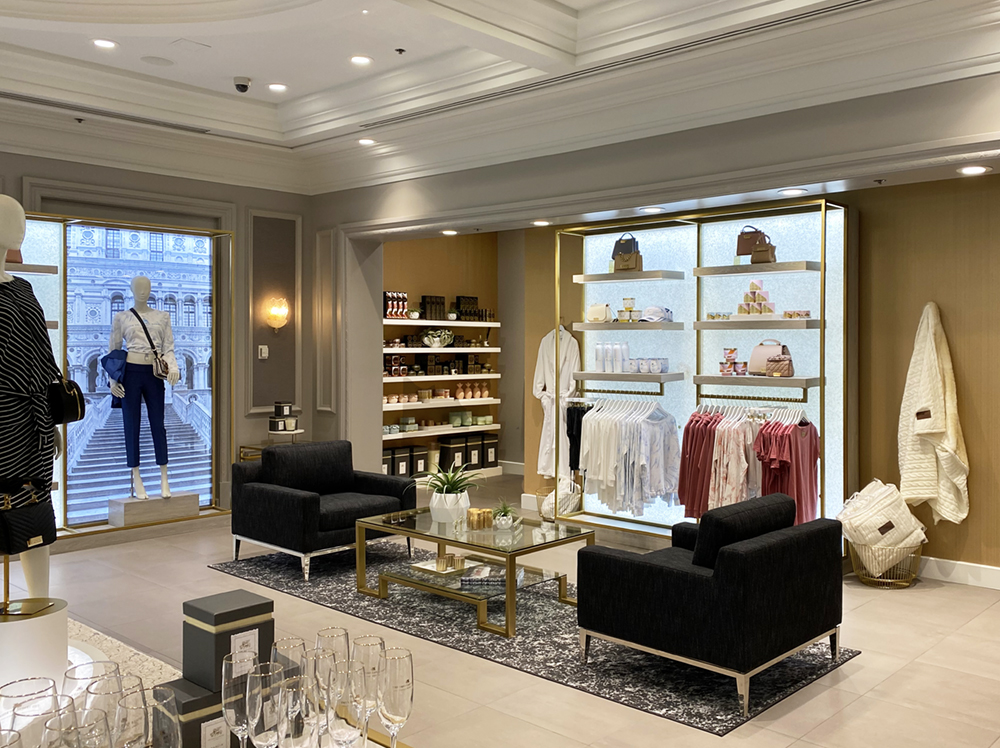A good retail store design can do wonders for the retailer. From arranging every product properly to amplifying customer experience, a good retail design is powerful in attracting customers and driving sales. The following article highlights some popular retail designs that can turn the entire look of the store.
1. Open Floor Plans
Visual merchandising firms in Las Vegas and the rest of the country have always focused on curating the right floor plans for stores. A floor layout is a strategic and well-thought arrangement of permanent fixtures in the store. These may include shelves, counters, waiting seats for the customers, etc.
To pick the right layout for the store, it is first important to determine the needs of the business. For instance, a grocery store will require a layout that can display as many products as possible while facilitating the shopping experience of the customers. On the other hand, a fashion store might want to display a few items in a luxurious manner. The store layout also depends upon the total space available and how the store wants the traffic to be directed. Here are some common layouts preferred for retail visual merchandising in Las Vegas:
- Grid Floor Plan: Usually preferred for grocery and convenience stores, a grid floor plan has a well-structured division of the space and shelf-stocked goods
- Loop Floor Plan: This layout works best for retail stores that prefer having maximum space while allowing the shoppers to follow a defined pathway. This is usually found in specialty retail stores that sell apparel, toys, homewares, personal care, etc.
- Mixed Floor Plan: These floors are arranged in a creative manner with shelves, furniture items, and counters mix-matched. This plan works best for specialty brands, boutiques, personal care stores, and bakeries.
- Diagonal Floor Plan: These plans help in maximizing employee visibility, especially if there are a lot of products in the store. This plan is preferred for retailers who sell tech products, cosmetics, skincare, food items, etc.
- Angular Floor Plan: Just like the name suggests, angular floor plans are arranged in an angular manner to show inventories in stores that sell high-end apparel, accessories, limited items, or specially curated designer products.
- Forced-path Floor Plan: These floors also provide guidance to shoppers by setting a predetermined path. In this way, these floors expose the customers to all of the products. The floor plan is preferred for furniture stores, showrooms, home decor, etc.
2. Pop-up Shops
Pop-up stores are perfect for businesses that want to spread brand awareness and create hype. Ecommerce businesses can open pop-up stores, display their products for testing, and connect with their customers. Online retailers can also have pop-up shops from time to time, for instance, as part of trade shows and exhibitions, to create a physical presence amongst their customers. They can build connections with their existing customers and attract offline customers as well.
Plus, pop-up shops are not super expensive. They are also customizable. Accordingly, brands can easily personalize their pop-up shops according to their brands or take help from a visual merchandising group in Las Vegas to design their shops.
3. Touch-free Shopping
After the COVID-19 pandemic, customers have become very conscious of their purchase decisions. Customers now prefer convenient and touch-free technology to support them in shopping when visiting physical stores.
This is why many brands have started to shift to incorporating technology in their stores with the help of root waiters, voice activation features, and QR code support. Accordingly, instead of maximizing foot traffic as much as possible, brands also have to incorporate online features to make transactions smooth and fast.
Digital signs that use LED or LCD can also be placed inside the stores to display videos, digital images, and information about products. Digital signage can also reduce the need for on-ground employees, as all the information can be accessed with a few clicks.
What is important to remember here is that digital signage should be placed strategically in a store. They can be positioned in front of the store or near the window displays to attract the attention of passersby. If the digital signs are placed at the back of the store, customers might miss them.
4. Ethical Shopping
When it comes to visual merchandising in Las Vegas, customers also want to see brands take actionable steps toward important topics like mental health, climate change, social movements, etc. Moreover, consumers also want to ensure the brands are working sustainably.
Accordingly, brands are expected to exemplify this at their physical stores as well. For instance, some grocery stores have started to install solar panels in their parking lots to generate electricity using solar power. Some brands change the ambiance of their stores with respect to crucial months. Not only does this attract more customers, but people might even post about the stores online, appreciating them for their efforts. In this way, brands can communicate their vision while increasing sales of their items.
5. Focus on Exterior Appeal
The best things shouldn’t be kept inside a retail store. Instead, the exterior store makes the first impression on the customers. Everything from tour signage to window displays matters when it comes to designing a retail store. Accordingly, the goal of a store’s exterior should be to attract customers to enter the store, explore the products, and make a purchase.
Brands should not shy away from being bold with their exterior design. Bright colors, smart product placement, innovative designs, and attractive taglines can help the brand create a selling exterior. Brands can also add dramatic lightning to break the monotony.
Keeping up with the changing consumer behaviors and trends is crucial to ensure a retail store keeps attracting customers. Today, customers want to see sustainability, customization, and technology in the stores and the vision and mission that the brand stands for. Brands that come up with fresh and creative ideas are taking the lead.

